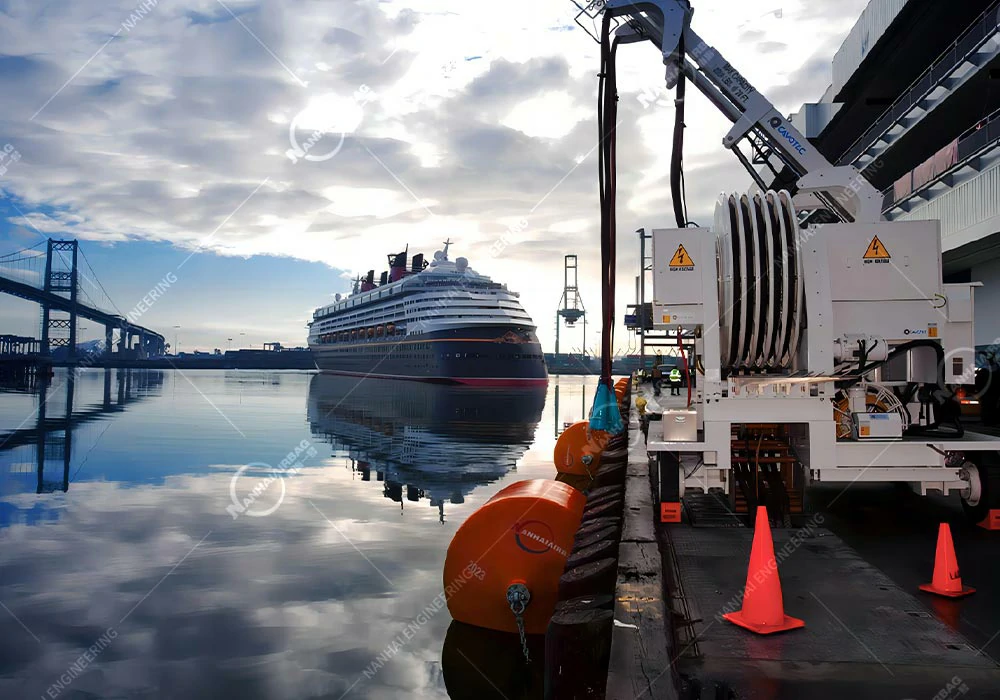Element vs Cone vs Cell Fender: What’s the Difference?
07/10/2025Tugboat Fenders for Heavy-Duty Marine Operations
07/11/2025Why Cruise Terminals Prefer Foam Filled Fenders?
Why Cruise Terminals Prefer Foam Filled Fenders
Why This Matters Now
Cruise traffic is surging globally, and with that comes increased pressure on terminal safety and efficiency. Imagine a brand-new NCL ship docking in San Francisco: an unexpected swell or misaligned approach could mean thousands in hull repair or passenger delays. That’s why this issue is urgent: terminals need dependable, low‑maintenance protection. During peak summer 2025, multiple ports reported fender failures, causing costly delays—something terminals simply can’t afford.

Featured Snippet: Advantages of Foam Filled Fenders
Foam filled fenders (also called marine fenders or ship fenders) combine a tough urethane shell with a closed‑cell foam core, offering unsinkable, puncture‑proof, and highly energy‑absorbing protection for cruise ships. They stay afloat, even when damaged, and require minimal maintenance—perfect for busy cruise terminals like NANHAI’s.
Why Cruise Terminals (Like NANHAI) Love Them
- No deflation worries ☁️
Closed‑cell foam keeps fenders buoyant even if the outer layer gets nicked—unlike inflatable pneumatic fenders that lose pressure instantly. - Superior impact damping
Foam core compresses under load, absorbing energy over longer distances to cushion vessels smoothly . - Durable in harsh marine environments
Resistant to UV, salt spray, and extreme temps, foam filled fenders are built to last 10–25 years, outperforming many inflatable or rubber fenders. - Low maintenance, high reliability
No need for monthly inflation checks—just periodic inspections. That means fewer manpower hours and no downtime for the NANHAI foam fenders. - Buoyant and stable
These unsinkable fenders float beside the dock, unaffected by tides, keeping consistent protection at all water levels.
Why This is a Must-Read for Cruise Port Managers
If you’re in charge of terminal operations, you care about three things: vessel safety, passenger experience, and turnaround speed. Foam filled fenders check all the boxes—they prevent damage, reduce downtime, and streamline docking, so NANHAI and other terminal brands can keep passengers smiling and ships sailing on schedule.
FAQ
- What are foam fenders used for in cruise ports?
Protecting hulls during berthing—and they’re especially favored in permanent installations due to their long lifespan. - How do foam and pneumatic fenders compare?
Pneumatic types need inflation and risk punctures: foam filled units don’t, giving them a maintenance edge. - Are foam filled fenders environmentally friendly?
Yes—they last long, need fewer replacements, and many are made with recyclable materials. - How often do cruise terminals need to replace fenders?
Foam fenders can last over a decade; replacements are typically only due after 10–25 years, depending on wear and environment.
Let’s Wrap It Up
Cruise terminals, especially busy operators like NANHAI, thrive on efficiency and precision. Foam filled fenders offer cost-saving, reliable protection by being:
- Puncture‑proof and unsinkable
- High energy absorbers for gentle docking
- Long‑lasting in tough conditions
- Maintenance‑lite, freeing staff for other tasks
If you’re vetting marine fenders, give foam filled models top priority—your vessels, passengers, and bottom line will thank you.
Want to go deeper? Read more about how NANHAI terminals implement foam filled fenders in high‑traffic cruise berths, and compare this tech with pneumatic and rubber alternatives.
